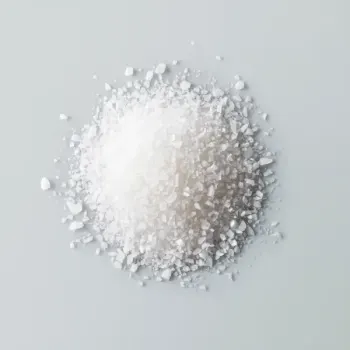Celtic Sea Salt and table salt differ in taste, texture, and mineral content. Celtic Sea Salt has a milder flavor with a moist, coarse texture and trace minerals, while table salt is finely textured with a sharper taste, fortified with iodine, and has added anti-caking agents.

Celtic Sea Salt is a type of sea salt that is harvested through the evaporation of ocean water or saltwater from tidal pools, with minimal processing. It retains its natural moisture, is often grayish in color, and contains a spectrum of trace minerals.

Table salt, also known as iodized salt, is mined from salt deposits and then processed to give it a fine texture. It's usually fortified with iodine and anti-caking agents to prevent clumps, making it a free-flowing seasoning.
Celtic Sea Salt typically has a milder flavor with a hint of briny zest due to its trace minerals, while table salt has a sharper, more pronounced salty taste. The texture of Celtic Sea Salt is also coarser and more moist than the fine, powdery texture of table salt.
The source of Celtic Sea Salt is the ocean, and it undergoes minimal processing, preserving its natural minerals. Table salt comes from salt deposits left by ancient bodies of water and goes through heavy processing, which strips away most minerals.

Your ultimate Recipe Box, Meal Planner, and Cooking Class all in one
Celtic Sea Salt is best used as a finishing salt for its texture and flavor. It's great on top of meats, vegetables, and even chocolate to add a mineral complexity. Its moisture and coarseness can enhance the final taste of a dish. Table salt is best used during the cooking process, as it dissolves quickly and provides a uniform salty flavor throughout the dish. It's ideal for baking, where precise measurements are necessary for the chemistry of the recipes.
In baking, Celtic Sea Salt can be used for its mineral content and rustic texture. It's particularly effective in bread making and rustic pastries where a more pronounced grain is desirable. Table salt is generally preferred in baking due to its fine texture, which allows for even distribution without affecting the texture of the baked goods. It's ideal for cakes, cookies, and pastries that require precision.
Celtic Sea Salt can add a complex flavor profile to soups and sauces. It's perfect for slow-cooked dishes where the salt has time to dissolve fully and infuse the dish with its full-bodied taste. Table salt is often used in soups and sauces for its ability to blend seamlessly into the liquid, offering a consistent salty flavor. It's the go-to salt for quick-cooking soups and sauces where immediate dissolution is needed.
Both Celtic Sea Salt and table salt are primarily composed of sodium chloride. However, Celtic Sea Salt retains trace minerals that are absent in table salt due to processing.
| Nutrient | Table Salt ( per Teaspoon ) | Celtic Sea Salt ( per Teaspoon ) |
|---|---|---|
| Iodine | 45 micrograms (30% daily value) | |
| Sodium | 2325mg | 1600mg |
| Calories | 0 | 0 |
While you can substitute Celtic Sea Salt for table salt, you may need to adjust amounts due to differences in grain size. Also, the unique mineral taste of Celtic Sea Salt might not be suitable for all recipes.
Celtic Sea Salt contains trace minerals that are not present in table salt. However, both are high in sodium, so they should be consumed in moderation.
Yes, Celtic Sea Salt often has a milder and more complex flavor due to its trace minerals, while table salt has a more straightforward salty taste.
Celtic Sea Salt retains its natural moisture from the sea and is less processed, whereas table salt is dried and usually contains anti-caking agents.
The trace minerals can add subtle flavor nuances to your dishes, which can be desirable in some recipes, especially those where salt is a finishing touch.